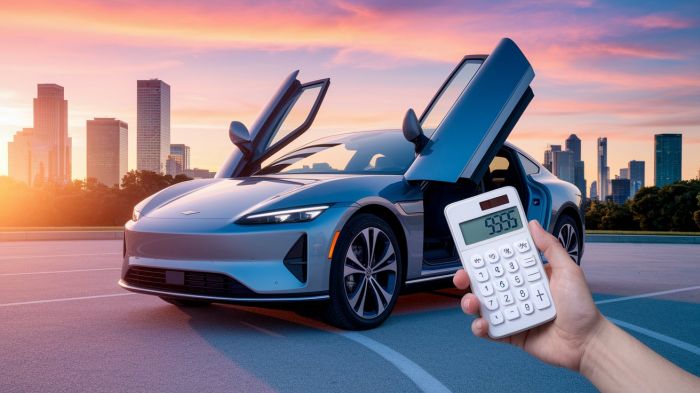Cars have never been more packed with conveniences than they are today. Thanks to innovative technology like Park Pilot, we can enjoy the luxury of having a vehicle that parks itself. However, like most technology, Park Pilot is occasionally prone to errors and malfunctions. When this happens, you might see a Park Pilot malfunction warning appear on your dashboard.
Park pilot malfunction message highlights
- Common reasons:ABS sensor problem, parking sensor issues, control unit failure
- How to fix:read the codes, check the ABS sensors, check the parking sensors' wires
- Possible consequences:parking aid won't work
- Priority level:Low
- Can you drive?Yes
- DIY repair:Possible
- Repair price range:$80-$350
.jpg)
What is a Park Pilot Malfunction?
Park Pilot, also known as Assistive Parking, is a system designed to make the parking experience as smooth as possible. It also aims to improve the safety of those in and around the car by preventing collisions during parking. It uses sensors mounted around the car to detect obstacles and help you guide your car into the parking space with ease.
The system performs several functions, from finding suitable parking spaces for you and even taking over the vehicle's controls to navigate even the most difficult parking situations. This technology is especially useful for parallel parking your car.
A Park Pilot malfunction occurs when something has gone wrong with the system that prevents it from working. This means that you won't be able to use Park Pilot and its many helpful features until the cause of the malfunction has been addressed.
What Causes a Park Pilot Malfunction?
If the dashboard of your Ford displays a Park Pilot Malfunction warning, it means that there is something interfering with the normal operation of the system. In most cases, the problem has to do with the parking sensors that the car uses to detect its environment. Because of their location on the outside of the car, these sensors are exposed to the elements and other hazards that can affect the operation of the sensors.
If the sensors are blocked or damaged, the system won't be able to detect obstacles near the car, and you won't be able to activate Park Pilot.
- Blocked by dirt
Most of the time the malfunction is caused by the external sensors being blocked by dirt or debris. This can happen after driving through muddy or wet roads. The tires can throw up mud, water, or snow that sticks to the sensors and blocks them.
- Sensor contains water
The parking sensors are located on the outside of the car, usually on the front and rear bumpers. This exposes them to water, especially in rainy conditions and on wet roads.
You're more likely to notice this when driving after heavy rain, or after going through a car wash.
- Damaged or Broken Sensor
The parking sensors are located on the bumpers of your car, which exposes them to bumps and collisions. They are sensitive equipment, and even a minor collision is enough to stop them from working. A single damaged sensor is enough to cause the Park Pilot malfunction warning to appear.
How to Fix a Park Pilot Malfunction
Seeing this error doesn't mean you have to go back to the old way of parking your car manually. Fixing your Park Pilot malfunction is often surprisingly easy.
It's important to know how to troubleshoot the cause of the problem. Once you've identified the cause of the malfunction, you can often fix it within minutes.
- Clean the Sensors
This is the easiest way to fix a Park Pilot malfunction. You can do a quick visual inspection to determine if your sensors are dirty. Check the rear and front bumpers for the parking sensors. The location and number of sensors vary depending on the make of your vehicle. However, there are usually two to four sensors on each bumper. They are typically located on the corners and center of the bumpers.
If you notice any visible mud, dirt, snow, or leaves on the parking sensors, you can simply wipe them clean with a damp microfiber cloth. Make sure to dry the sensor afterward to prevent water from getting into it.
Don't use anything sharp or abrasive to scrape debris or mud off the sensor. This could scratch the surface of the parking sensor and damage it.
- Remove the Water from Your Sensors
If your sensors are filled with water, you can fix them easily without needing to open them. You can drive the water out by spraying the sensor with WD40 or any other oil-based lubricant. Make sure to spray the sensor only two or three times, otherwise, you risk filling the internals with oil. After spraying the parking sensor, wipe it down with a rag to remove the excess oil and water.
You can also remove water from your sensor with a can of compressed air. Simply aim the nozzle at the creases surrounding the sensor, where it joins to the body of the bumper. Give it a few bursts of compressed air, and make sure to change the angle and position of the nozzle to get all the water out. The high-pressure air should force out any water in the sensor. After a few bursts, the sensor should be dry.
- Replace the Sensor
If cleaning the sensors hasn't gotten rid of the malfunction warning, then you're probably dealing with a damaged parking sensor. You can replace your broken sensor at a mechanic, but you can easily do this yourself if you have the right equipment.
First, you will need to identify the faulty parking sensor. Your car won't tell you which sensor needs replacement, but you can find it yourself using a smartphone or any device that records sound. When they are operating normally, the sensors emit ultrasonic waves that cannot be detected by human ears. This sound can be heard when recorded and played back on a smartphone or any other audio device.
To identify the damaged sensor, turn on the Park Pilot and hold the microphone up to each sensor for a few seconds. Now listen to the playback. If you can hear a repetitive clicking sound, then the sensor is fine. However, silence or faint whining noises indicate that the sensor is damaged and needs replacement.
To change the sensor, you'll need a replacement parking sensor, a panel remover, and a 10mm wrench. You can find a replacement sensor online. Just make sure you buy a sensor that is compatible with the make of your car.
- Use the wrench to remove the bolts that hold the bumper to the car. You may have to look in the trunk, wheel wells, and under the hood and bumper to find these. Some of the bolts may be covered by panels or push pins. Use the panel remover to take these off.
- Locate the sensor and remove it from the plastic sensor bracket.
- Remove the sensor from the wiring harness.
- Push the new sensor through the hole in the bumper.
- Slide the sensor bracket onto the new parking sensor to secure it in place.
- Plug the wiring harness into the sensor.
- Reinstall the bumper on the car.
Test the Park Pilot to make sure that the new sensor is working as it should.
How to Prevent Park Pilot Malfunctions
It is important to be able to keep your parking sensors in good working order. There are some simple precautions you can take so you're never caught by surprise having to park your car without assistance.
- Make sure to keep the vehicle clean of ice, snow, and dirt. You can take a quick look at your parking sensors before getting in the car to make sure they aren't obstructed.
- Make sure to cover your car with a waterproof tarp whenever it is going to be left out in the rain. You should also tape up the sensors with duct tape or any other type of waterproof tape before going through a car wash. If you wash your car manually, try to avoid pouring water directly on the parking sensors.
- The sensors are very delicate and are easily damaged or misaligned by minor collisions. Minor mishaps never happen on purpose but try to drive carefully to avoid hitting the bumpers or sensors against anything. Your parking sensors really are more sensitive than you might think.
Conclusion
Park Pilot takes a lot of the stress out of parking, from finding a parking spot for you, to warning you of nearby obstacles, and even parking the car for you. That's why it's understandable that having to deal with a malfunction can lead to a lot of frustration.
Most of the causes of a Park Pilot malfunction can be solved simply by making sure your parking sensors are clean and free of dirt and water. In the case of a damaged sensor, you can easily replace the faulty part and save yourself a lot of money in the process.
Whatever the cause of your Park Pilot malfunction might be, it only takes a few minutes of effort to get rid of the problem. Whenever you see a Park Pilot malfunction warning, just follow the steps above to resolve the issue and get back to parking your vehicle with ease.
About the authors
The CarAraC research team is composed of seasoned auto mechanics and automotive industry professionals, including individuals with advanced degrees and certifications in their field. Our team members boast prestigious credentials, reflecting their extensive knowledge and skills. These qualifications include: IMI: Institute of the Motor Industry, ASE-Certified Master Automobile Technicians; Coventry University, Graduate of MA in Automotive Journalism; Politecnico di Torino, Italy, MS Automotive Engineering; Ss. Cyril and Methodius University in Skopje, Mechanical University in Skopje; TOC Automotive College; DHA Suffa University, Department of Mechanical Engineering






Add comment